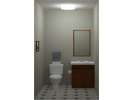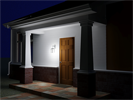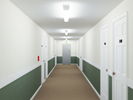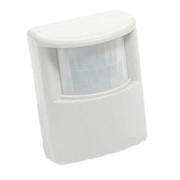
Sensors
Sensors for indoor use include vacancy sensors (manual on/auto off) and occupancy sensors (auto on/off). Sensors for outdoor use include motion sensors (auto on/off) and dusk-to-dawn sensors (auto on/off). Vacancy, occupancy, and motion sensors either respond to a change in infrared heat motion, or a change in ultrasonic frequency. Dusk-to-dawn sensors, also known as photosensors, turn on automatically when light drops below a specified level. Combination sensor/dimmer units (bi-level) are available that dim bulbs instead of turning them off when no motion is detected.
Sensors can save energy and extend bulb life. Frequent switching of fluorescents will shorten burning life, but may increase actual service life if the bulbs are turned off during periods when they might have been left on.
Use motion sensors where occupancy is infrequent or of short duration and the bulbs are likely to be left on, such as basements, bathrooms, bedrooms, and exteriors. Manual on/auto off vacancy sensors also decrease the likelihood of bulbs being activated by motion caused by pets or moving objects or bulbs being activated when there is sufficient daylight in the room. Use motion sensors with a manual off override in any space where the resident may want the bulbs off during occupancy, such as bedrooms.
Use either infrared or ultrasonic sensors for detecting large body motion such as walking. Use ultrasonic sensors in a room with obstructions or for detecting small body movement such as writing, typing, or turning pages in a book.
Cautions
- Motion detectors may shorten the life of CFLs and fluorescent lamps (tubes).
Example Patterns



